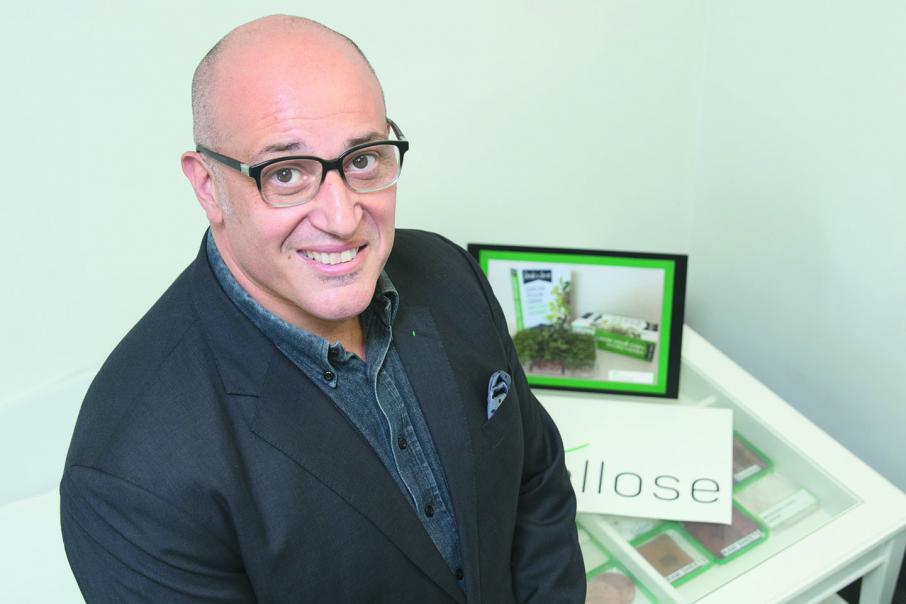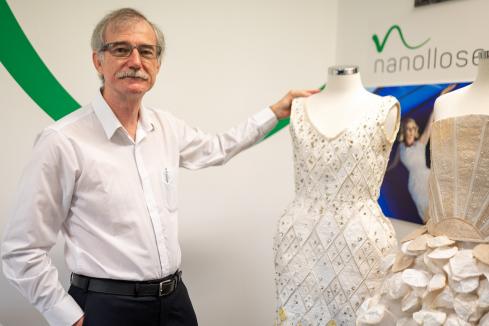

Textile company Nanollose has created what it says is the world’s first plant-free viscose-rayon fibre, claiming it represents a breakthrough in its efforts to reduce environmental impacts on the fashion industry.
Typically, the $US10 billion (2014) rayon industry requires that many millions of trees be cut down each year, including some from ancient endangered forests, according to Nanollose managing director Alfie Germano.
Cellulose, which is needed to produce viscose rayon, is extracted from the trees’ pulp, and then chemically treated before undergoing an energy intensive purification process.
The process used by Nanollose takes biomass waste from the food and beverage industry, such as beer and wine, and uses Acetobacter bacteria to ferment the biomass, converting it into home-grown cellulose.
Following a completion of a $5 million public offering in October, Nanollose took its early-stage concept, in the form of cultivated sheets of material, and developed it into a scalable fibre that is now on the brink of commercialisation.
Mr Germano told Business News textile manufacturers could use the fibre like any other rayon without the need to replace existing infrastructure.
Partnerships with manufacturers would involve a licence to use patented Nanollose technology; Nanollose currently has three, with several more in the pipeline.
“Over the past three months, interest in our fibre technology from multiple textile, apparel and fibre manufacturers has been significant, and the next step will be around accelerating towards producing sufficient quantities of rayon fibre samples for these groups,” Mr Germano said.
“My enquiries, and they’re coming fast and furious, come from every level of the industry; they come from high end to middle to say the lower tiers – that includes people from the medical industry and people from the hygiene industry.”
Mr Germano said the Nanollose technology had huge public relations potential for clothing brands, and it was important that the company marketed to all levels of the supply chain to stimulate demand.
“I consider myself the conductor of this orchestra, so I’ve got to get every section playing together nicely so we’re harmonising correctly so that the end is achievable,” he said.
Part of that orchestral performance included building partnerships with suppliers of waste biomass such as the coconut industry, given a number of bio-products from the established industry can be synthesised into microbial cellulose.
Mr Germano expects Nanollose to form partnerships with biomass suppliers and customers within the next six to eight months.
“A very large, high-fashion group, when I say high fashion I mean a really high fashion group, I’m going to be on the phone to them next week talking about this, because they want to talk,” he said.
Mr Germano, who has about 30 years’ experience in the textile industry, having held positions at global apparel brands including VP and Gap Clothing, said the demand for more eco-friendly solutions for apparel was soaring.
In April this year, retail juggernaut H&M released its sustainability report, outlining a commitment to use 100 per cent recycled or other sustainably sourced materials by 2030 and to become eco-friendly throughout its entire value chain by 2040.
Fast-fashion brand Zara has taken a similar approach with the launch of its new sustainable line, Join Life.
“The entire industry is experiencing a green wind of change that is customer driven; every day we see headlines showing this shift is becoming more solidified, and we believe we have a solution,” Mr Germano said.
Mr Germano told Business News that, now the foundations of the company had been laid, he had ambitions in the pipeline to gain industrial partners with existing infrastructure to scale-up the business.










